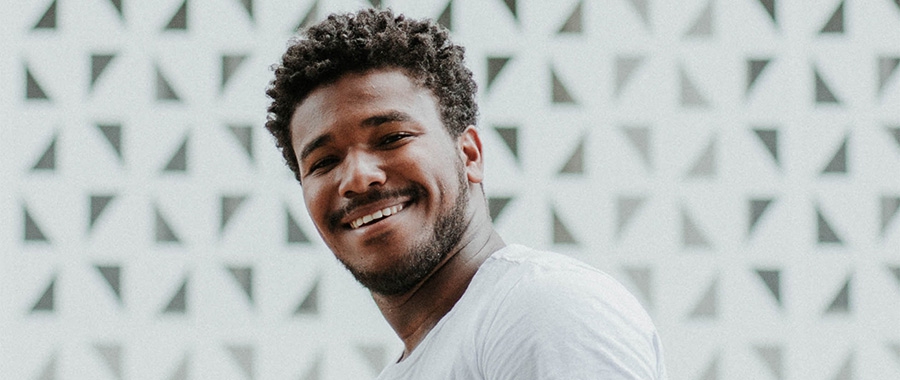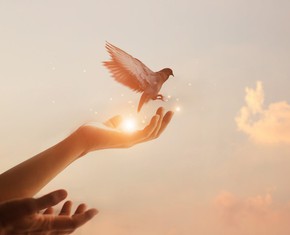The views expressed in our content reflect individual perspectives and do not represent the authoritative views of the Baha'i Faith.
Growing up between my parents’ homes in New York City and Miami in the early 1980’s, I fortunately lived in spaces curated to create an environment which affirmed my cultural heritage.
My mother, bohemian and creative, wore caftans from north Africa and meticulously wrapped her hair with vibrant colors and patterns. She lined her bookshelves with writers such as Rita Dove, Alex Hailey, and Claude McKay.

Gil Scott Heron
My father, whose neatly-quaffed afro reminded me of Link from the TV show The Mod Squad, prominently displayed a series of prints produced by the Budweiser Brewing company that featured African kings and queens. He listened to the Isley Brothers, Gil Scott Heron, and Marvin Gaye.
Blackness, in the context of my immediate surroundings, wasn’t a negative construct subject to derision and ridicule, but rather a source of affirmation and pride.
My parents’ intentionality, born out of necessity, demonstrated a determined response to the existential threat of racism. They had lived long enough to see the wrecking ball of hate make ruins of black children, and although they could not fully protect me from the societal consequences of my color, they nevertheless were determined to nurture and build a healthy self-perception for me within the walls of the homes we occupied.
But they could not control or curate the world that waited for me every time I left to go to school or play with my friends, out beyond the purview of their protective gaze.
In that outside world, my skin tethered me to a different reality, one that could have a corrosive and devastating impact on my mental and physical well being. As I grew into manhood, my carefully constructed parental universe became an abstraction for me. You see, I hadn’t been to Africa: I didn’t know any kings and queens; the Isley Brothers and Marvin Gaye could make me tap my feet—but songs of love lost and love gained couldn’t save me.
Entering Atlanta’s Morehouse College in the fall of 1990, after a difficult two years attending an elite northeastern art college, became an astounding experience. Everywhere I looked I was surrounded by dignified, accomplished individuals who looked like me, a striking contrast to the paucity of positive images represented in the media, where public perception was and still is formulated.
I soon learned one of the priceless benefits of attending a historically black college: it normalized black excellence. I imbibed the noble visages of African American men and women striding confidently across campus, secure in their abilities and hopeful about the future. I walked in the footsteps of the great theologian Howard Thurman. I felt the spirit of a gifted fourteen-year-old freshman and first black mayor of the city of Atlanta, Maynard Jackson, and as I looked out over Tiger stadium I could visualize the future Olympic gold medalist Edwin Moses, striding over the hurdles with a steady, rhythmic grace.
On this historic campus, founded just after the Civil War to educate newly freed African Americans, achievement was an expectation, not an exception—a powerful buttress against forces arrayed against us in the general society. Safe within the borders of this cultivated black intellectual space, unencumbered by the weight of objectification and marginalization, my emerging talent flourished, and my growing cultural awareness congealed into a more fully realized sense of self. Little did I know, that my plunge into the stream of black awareness constituted the beginning of my journey and not the end, for streams must inevitably flow into rivers, and rivers ultimately empty into the sea:
The holy Manifestations of God were sent down to make visible the oneness of humanity. For this did They endure unnumbered ills and tribulations, that a community from amongst mankind’s divergent peoples could gather within the shadow of the Word of God and live as one, and could, with delight and grace, demonstrate on earth the unity of humankind. – Abdu’l-Baha, Selections from the Writings of Abdu’l-Baha, p. 278.
In the spring of 1992 I embraced the Baha’i Faith, after being introduced to it by a brilliant and beautiful drama student at Spelman College. My attraction to the Faith started with its founder Baha’u’llah’s teaching of the oneness of humankind in a radical and groundbreaking way.
I had heard general calls to unity before in the speeches of charismatic leaders, or the writings of well-intentioned public servants—but almost without exception, these appeals rooted themselves in a homogeneous view of sameness that implied a negation of cultural identity. We’ve all heard the standard line indicative of this attitude: “I don’t see color,” which I had come to understand as a bizarre conflation of racial justice and equality. Though well-intentioned, that “colorblind” attitude really identified a refusal to acknowledge diversity.
The ideological subtext seemed to be saying that unity was possible only and until the ethos of a people is rejected. In this context my blackness becomes an inhibitor of equality, fellowship and brotherhood, not a contributor to it. That which makes me uniquely me must be relinquished for a banal, bland approximation of uniformity that ignores the scintillating vibrancy of difference and the beauty of true unity. Having fought so long to internalize a healthy awareness of the contributions people of African descent have made to the world, I could not accept any philosophical or theoretical approach that did not embrace that dimension of my being. Fortunately, the Baha’i faith offers a different approach:
In reality all are members of one human family—children of one Heavenly Father. Humanity may be likened unto the vari-colored flowers of one garden. There is unity in diversity. Each sets off and enhances the other’s beauty. – Abdu’l-Baha, Divine Philosophy, pp. 25-26.
Baha’is should obviously be encouraged to preserve their inherited cultural identities, as long as the activities involved do not contravene the principles of the Faith. The perpetuation of such cultural characteristics is an expression of unity in diversity. – The Universal House of Justice, from a letter to the National Spiritual Assembly of the Baha’is of Malaysia, May 26, 1982.
The Baha’i teachings emphatically affirm the value of diversity as a prerequisite for unity. Baha’is don’t ignore variance in cultural expression, nor do we walk tentatively away from it. We run towards it with arms outstretched, celebrating the gift of God’s disparate, distinctive and divine creation.
In his sonic masterpiece A Love Supreme, the gifted saxophonist John Coltrane offered a melodic prayer to the Creator, repeating the phrase ‘love supreme’ again and again throughout the composition. The metered recitation becomes a mantra as the pianist McCoy Tyner, bassist Jimmy Garrison, and drummer Elvin Jones improvise off of Coltrane’s hypnotic voice. Each contributes his unique interpretive musical gifts to the central thematic element of the whole. Their expressive versatility, distinct and clearly defined, together comprises a timeless musical force greater than its component parts.
In this context the development of the soul, humanity’s primary identity, operates as the central theme of life, while culture, the dynamic expression of the collective spirit of a people, in some sense expresses a communal variation of the core dimension of human existence. To love one is to love the other. One cannot claim to love God and yet reject the diversity of His creation, anymore than one can claim to love the ocean and yet turn a dismissive gaze toward the streams and rivers that feed it.
















Comments
Sign in or create an account
Continue with Googleor